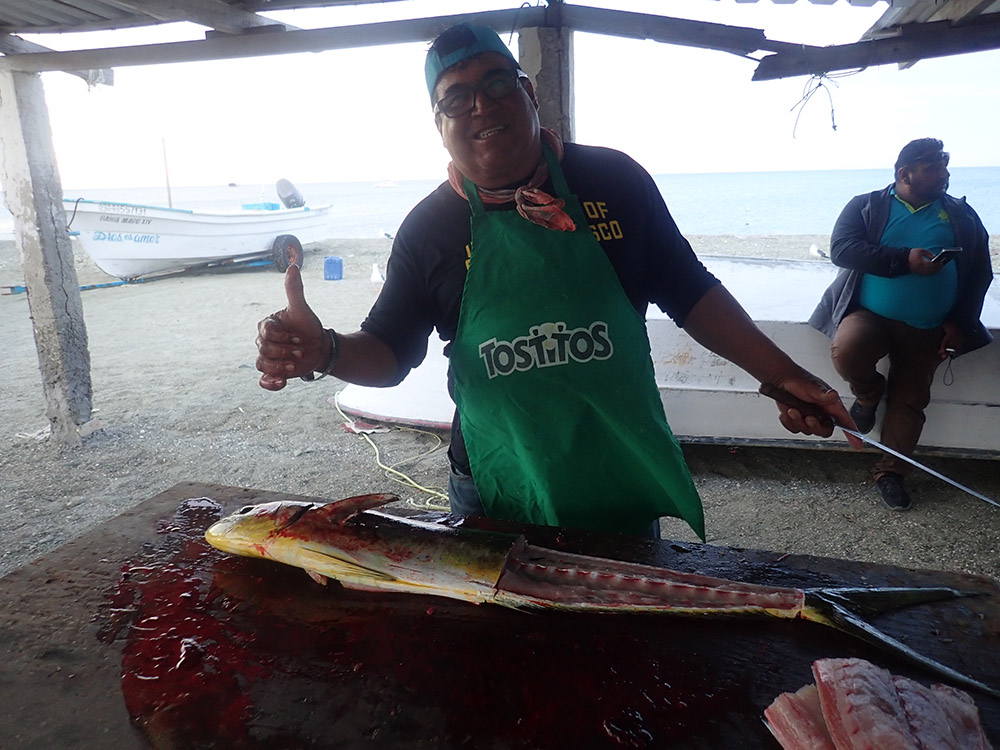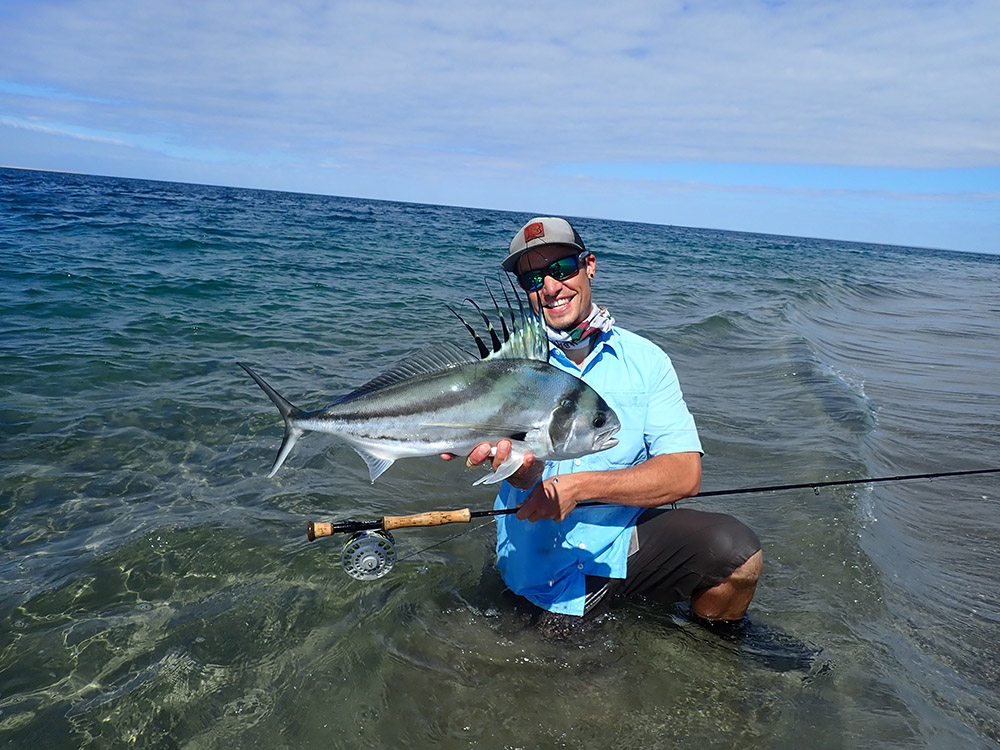
by Scott Sadil
In a small pueblo such as Puerto Adolfo López Mateos, nestled in the mangrove-lined esteros in the northern reaches of Baja California’s Magdalena Bay, it’s impossible not to notice the profound, essential difference between angling and fishing.
Nitpickers and master etymologists may choose to quibble with definitions, but the way I see it, angling is what sporting folk do with rod and reels, Tenkara enthusiasts notwithstanding, while fishing entails that timeless profession, perhaps the world’s second oldest, of wresting a livelihood by all manner of schemes and subterfuge from the waters of rivers, lakes, or the sea.

Fishing, in other words, is what you do because your life depends on it. Angling is what we do for fun—no matter the import we might feel, at times, pulling on the line.
In and around Mag Bay’s rich and varied waters, anglers enjoy ready access to all of the well-known Pacific coast gamefish, be they marlin or wahoo, dorado or tuna, yellowtail, roosterfish, snook, grouper, white seabass, and on and on. Local fishermen (in sixty-plus years, I’ve never seen a woman on a Mexican fishing boat) target the same and many other species, depending on what’s available during different seasons, although in most cases these fish are caught by methods and gear anglers consider unsporting, if not egregiously beyond the pale.

Herein lies the rub: Gringos and other visiting anglers encounter this wealth of sportfishing, relishing both the variety and abundance of angling opportunities, while at the same often bristling on seeing the take of local fishermen, including sardineros carrying away tons of food for the visitors’ favorite predator gamefish, not to mention the very bait these same anglers will often resort to in their “elevated” sport.
It’s funny how this tension can play out. I once heard Trey Combs complaining about the indigenous fishermen on the Quinalt River, on the Olympic peninsula—how if they would only stop netting the steelhead on their river, where fish can weigh upwards of thirty pounds, the fishery would be so good they could charge visiting anglers ten or fifteen or twenty thousand dollars a pop, just like the camps and lodges on the fabled Atlantic salmon rivers in Russia or Norway or wherever.

“They just don’t get it,” said Combs—when all I heard was someone else who didn’t get it, who failed to grasp that the locals might prefer to continue catching these magnificent fish themselves, rather than attending to wealthy visitors and their expansive wishes and needs.
Another take on the friction between angling and fishing can be found in Peter Matthiessen’s Men’s Lives, a somber but much-admired tale of the demise of dorymen livelihoods, both baymen and surfmen, in and around Long Island Sound. Many factors contributed to this sad end—pollution, skyrocketing real estate prices, new and persistent licensing fees and taxation—but to me the key factor is evident in Johnathan Raban’s 1986 New York Times book review, “This Is the Way a World Ends,” in which he claims the death blow was dealt in “efforts by sport fishing groups to limit the catch of striped bass, the commerical fishermen’s most profitable catch.”

So it goes. Although remote, perhaps, something similar could happen here in Mag Bay; if you know anything about the gringoization of the Baja Peninsula, you know how sudden and dramatic the changes can be. For now, the bay manages to support both angling and fishing, a balance I was made grateful for once more this morning, when I searched out an old fisherman’s house to see if I could fill my little propane bottle for Tamalita’s five-horse outboardbefore the next leg of my Mag Bay whaling and fly fishing expedition.
Oddly enough, the last several propane dealers I visited in both California and Oregon tried and failed to fill the bottle, each one offering another excuse why their pump and supply system doesn’t work on such a small receptacle. For a week now I’ve been using the motor sparingly, convinced it could run empty at any moment.
After turning his supply tank upside down and then standing it, precariously, on a pair of cinder blocks, the old pangero, moving about with the help of a pair of walking sticks, showed me how you need to first fiddle with my little tank’s double safety valve—a step nobody stateside seems to know anything about. Then, he hung the bottle from a manila line looped to the hook below a spring scale and demonstrated how to read it, so it was clear that I now had two-plus kilos of fuel in my five-pound tank.
It was just the sort of help that makes me appreciate having fishermen, not just anglers, nearby.
Gray’s angling editor Scott Sadil tries hard to keep in mind that, when it comes right down to it, angling and fishing are often more or less the same.
